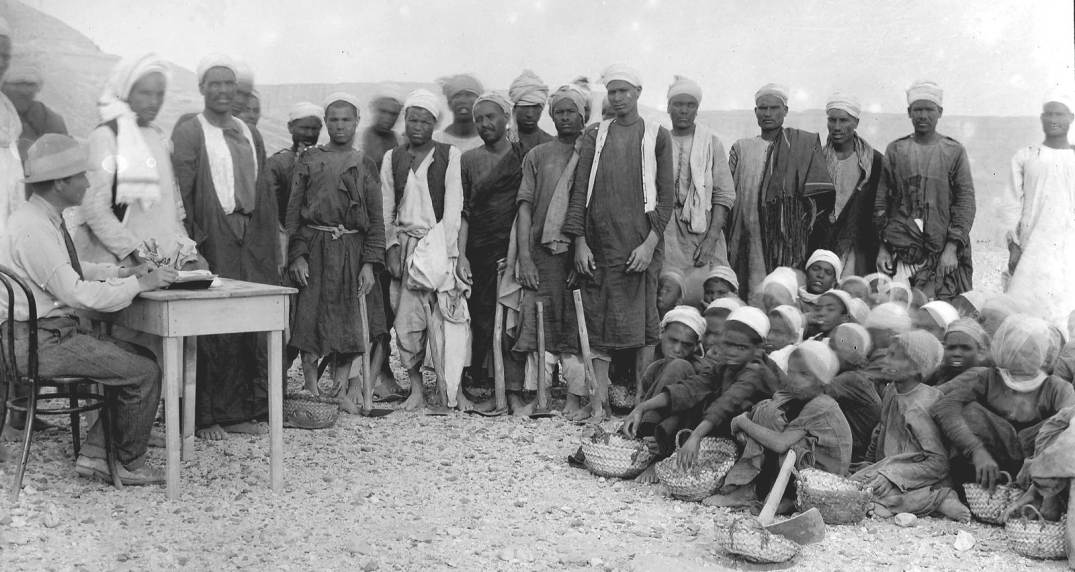There is more to life than work and the same applies on archaeological excavations! In addition to the daily work some dig teams make their own entertainment, and this is most clearly demonstrated by the Society’s excavations at Tell el-Amarna during the direction of John Pendlebury from 1930-36.
This side of archaeology rarely makes it into the archaeological publications but luckily, however, the Egypt Exploration Society Lucy Gura Archive contains some remarkable records detailing the daily life on site. Correspondence, photographs and film footage reveal the characteristics, peculiarities, enthusiasm, and teamwork behind some of the greatest discoveries in Egyptology.
TELL EL-AMARNA
Tell el-Amarna, one of Egypt’s most intriguing archaeological sites, was excavated continuously by the Egypt Exploration Society from 1921 to 1936. Amongst the most documented seasons of work, with regards to experiencing life on an excavation, was under the direction of John Pendlebury in 193-31. This is largely due to the account recorded by Mary Chubb in her book Nefertiti Lived Here (1956) and the film footage preserved in the EES archives. As well as the archaeological work, Chubb discusses the more light-hearted aspects of life at Amarna. These activities are demonstrated further by the remarkable film footage which shows various comically staged scenes, sports activities, Christmas fantasias, and group singing.
All the team including John Pendlebury, Hilary Waddington, Herbert Fairman, Ralph Lavers, and the huge Egyptian workforce can be seen in this footage, making it one of the most important resources for research of this kind.
PAY DAY
What would work be without pay-day?! On excavation this would usually occur on a designated day of the week, previously agreed by the team. Workers would also get baksheesh, an additional reward for particularly good work or a making a particularly valuable discovery. In other cases workers could be fined, for stealing, smuggling, damaging objects, or fighting. Payments were issued directly by the dig director in front of the rest of the workforce, often in a courtyard of the dig house. The payments would be kept in a pay-bag and money would be lined up ready for collection by roll-call. One such pay-bag, used by Walter Bryan Emery, is displayed in Excavating Egypt.

Pay day at Balabish in 1915. The dig director, Gerald Avery Wainwright sits behind the desk on the left